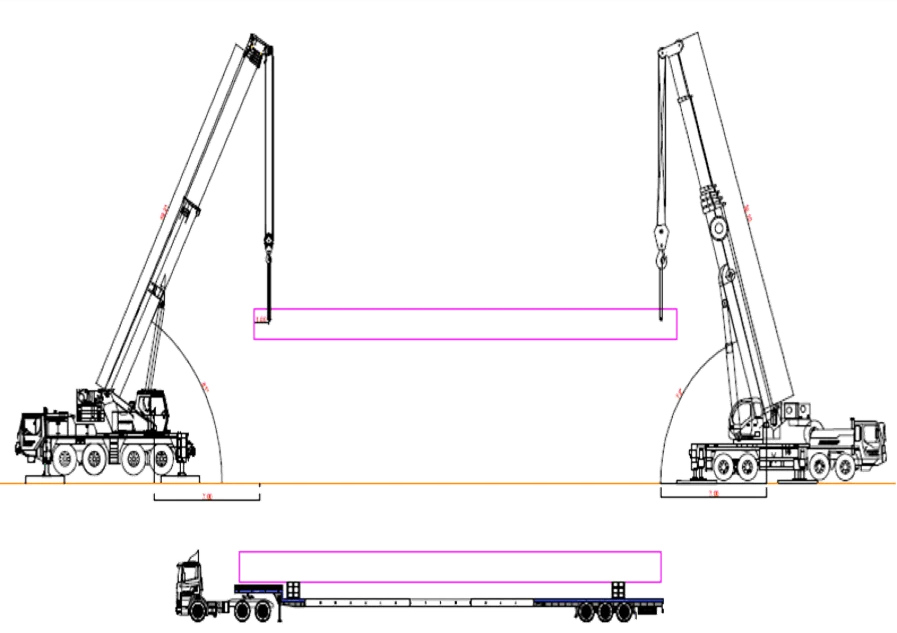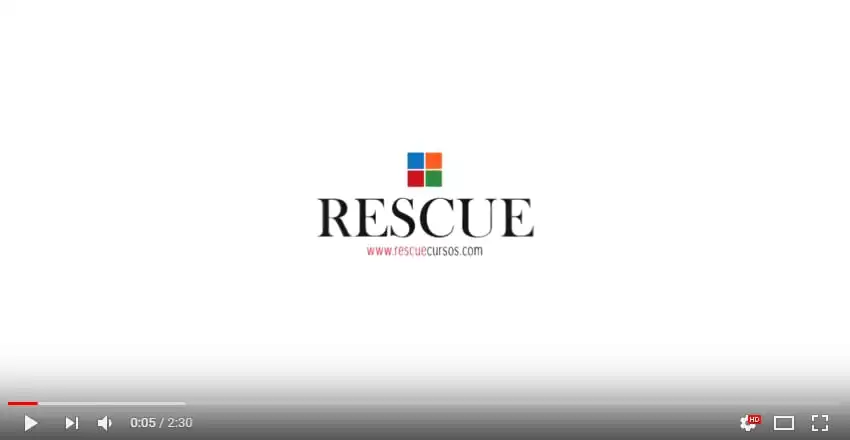Rigging Plan Training

Rigging Plan Training
Technical Name: Training course of the Rigging Plan
Reference: 9707
Rigging Plan Training
Training professionals in the supervision and assistance of cargo handling planning activities involving cranes and other cargo handling equipment, such as cranes, truck crane, derrick and overhead cranes, with a practical emphasis on the analysis and elaboration of Rigging Plans.
What is Rigging Plan?
Detailed and formalized planning of a cargo handling with hoisting equipment.
It indicates the best solution to make a certain lifting in the safest and most efficient way, and optimizing the resources (equipment, accessories, area preparation, etc.).
The plan is based on studies of cargo, cranes and mooring accessories, wind action, aerial interference, layout of the area of operation, among others, in order to avoid accidents and loss of time during lifting operations.
Escolha Seu Plano
100% Presencial
16 Horas - Com Experiência
Nossa Sede ou In Company DDD 11
Outros Locais Consultar
Por Pessoa/Turma (PagSeguro)
Semipresencial/Reciclagem
08hs EAD / 08hs Presenciais
Nossa Sede ou In Company DDD 11
Outros Locais Consultar
Por Pessoa/Turma (PagSeguro)
EAD (Ensino a Distância)
16 Horas - Com Experiência
Totalmente Online
Imperdível!
Por Pessoa/Turma (PagSeguro)
Preços Especiais
para Empresas/Turmas
Conteúdo Programático
Rigging Plan Training
01-The crane and its components
Introduction about cranes;
Equipment Presentation;
Main applications;
Groups and components;
Technical elements of cranes;
02- Load Tables:
Presentation of load tables;
Crane capacity;
Reading load table;
Particularities and information;
03-Technical Components of the Operation:
Angle of the lance;
Load;
Length of lance;
Security Factor;
Operation quadrants;
Working Radius;
Occupancy rate;
04-Physics applied to cranes:
Gravity center;
Tipping axis;
Basic math;
Moment of load;
Lever’s Principle;
05- Risks involved and safety in the operation:
Cargo tying;
Operation area;
Disassembly;
Depression;
Electricity;
Lateral and eccentric lifting;
Interferences;
Locomotion;
Materials of lifting;
Methods of individual and collective protection;
Irregular movements;
Outrigging;
Perception and risk analysis;
Free fall;
Signaling;
Overload;
Ground/Land;
Wind;
Notions of Crane Operation:
Lifting accessories;
Cargo tying;
Number of cables determination;
Opening Space / Lance Assembly;
Leveling;
Positioning and outrigging;
Operation signaling;
Use of the pulley / ball;
Checking crane capacity;
Operation with 2 or more cranes:
System calculation;
Gravity center of parts;
Requirements;
Operation with two overhead cranes;
Planning;
Verifications;
Weight of the load:
Weight calculation;
Gravity center of the load;
Conversion of units;
Lifting in the water;
Basic math;
Metric measurements;
09-Lifting Materials:
Rocker arms and lifting beams;
Guide rope;
Acceptance criteria;
Hooks, special eyelets Rud;
Handling of lifting materials;
What accessories to use;
When to use: strap, cable, straight shackle and or shackle strap;
Types of mooring;
Types of lifting materials;
10- Responsibilities:
Load handling area;
Crane;
Legislation;
Operation;
Staff involved;
Signaling;
Practical training: RIGGING PLAN
01-Field measurement:
Previous evaluation;
Crane assembly;
Outrigging;
Positioning;
Type of signaling;
Load check;
02-Sketches:
Application in AutoCad;
Scales with ruler;
Additional information;
Interferences;
Caption of the drawings;
Using the graph paper;
Views;
03-Rigging Plan:
Cargo mooring;
Approvals and responsibilities;
Operational conditions;
Choice of cranes, truck crane, derrick and overhead cranes;
Choice of lifting accessories;
Soil information;
Insertion of drawings;
Security and signaling;
Simulation of the operation;
Amendments:
Process Attention;
Common mistakes;
Calculation Review;
Reviews;
05- Standards: * ABNT NBR 11099, DIN ISO, NR 35, NR 12, NR 34, ANSI ASME, N1965 PETROBRAS and other norms applicable in moving loads and people.
General observations:
Training for Engineers, Technicians, Supervisors, People in charge who must have notion of trigonometry and notion of use with scientific calculator – Emphasis on Rigging Plan.
Assessment criteria: Theory: written test with open and closed questions.
Practice: operational proof with fulfillment of evaluative requirements.
Accidents prevention;
Procedures and notions of first aid;
Practical exercises;
Perception of risks and factors that affect people’s perceptions;
Impact and behavioral factors on safety;
Fear factor;
Consequences of Risk Habituation;
The importance of task knowledge;
Understandings about Ergonomics;
Workplace analysis (weight lifting, posture);
Ergonomic hazards;
Theoretical and Practical Evaluation;
Certificate of participation
Awareness of the Importance of the Equipment Operation Instruction Manual.
Attention:
DL Distance Learning, Presential and Blended
Legal Basis – Technical Standard 54 Ministry of Labor
RESPONSIBILITIES – Since OSH training is a labor obligation to be provided by the employer to its employees due to the risks arising from the activity being exploited, it is the responsibility of the employer to ensure its effective implementation, subject to appropriate administrative sanctions in case of training not effective or even the poor quality training that does not meet the requirements of the legislation. It is essential to note that, even if OSH training is chosen through AD or semi-admission, it is salutary that all training is adapted to the reality of each establishment. It is that the worker is being trained by the employer to act in a certain space, so a generic training will not meet the peculiarities of any and all economic activity. See the Technical Note 54 of the Ministry of Labor MT Click Here
Carga Horária
Rigging Plan Training
Capacity:
Minimun workload = 40 hours
Update (Recycle):
Minimun workload = 08 hours
CERTIFICATION: The Certificate will be issued for each participant that achieves the minimum use of 70% (theoretical and practical) as recommended by the Regulatory Rules.
Updating: It is recommended annually or if there is an event that indicates the need to update.
Certificado: Será expedido o Certificado para cada participante que atingir o aproveitamento mínimo de 70% (teórico e prático) conforme preconiza as Normas Regulamentadoras.
Qualification Certification Criteria or Update:
Our certificates are numbered and issued in accordance with applicable Regulatory Standards and provisions:
Issuance of A.R.T. (Annotation of Technical Responsibility);
Full name of the official and identity document;
Program content;
Workload; City, location and date of training;
Name, identification, signature and qualification of the instructor (s);
Name, identification and signature of the technical responsible for the training;
Name and qualification of our Qualified Professional;
Specification of the type of work and relation of the types of confined spaces;
Space for signature of the trainee;
Information in the Certificate that the participants received DVD containing teaching material (Handout, Videos, Norms etc.) presented in the training.
Training Evidences: Edited video, photos, digitized documentation, continuous improvement, instructor’s opinion: Consult values.
Attention:
NR-12.1.16 Crane equipment receiving coupled baskets for lifting persons shall be subject to periodic testing and inspection to ensure its smooth operation and structural integrity.
12.1.16.1 Tests that prove structural integrity, such as ultrasound and / or acoustic emission, shall be performed in accordance with ABNT NBR 14768: 2015.
12.3.17 The movement of suspended loads on the hook of the hoisting equipment is prohibited at the same time as moving persons inside the attached basket.
Causes of Accident Work:
Lack of employee care;
Lack of employer alert;
Even if you carry out all the Training and Mandatory Labor Safety and Health Reports in case of an accident at work, the employer will be subject to Processes type:
1- Police Inquiry – Civil Police;
2- Expertise through Criminalist Institute;
3 – Procedure for verification at the Regional Labor Office;
4 – Public Civil Investigation before the Public Prosecutor of the work to verify if the other workers are not in danger;
5- The INSS will question the cause of the accident that could be avoided and refuse to pay the benefit to the employee;
6- Relatives may join the Labor Court Process for moral damages, materials, dislocation, etc .;
7- Procedural Tsunami forcing the Employer to generate Defense Strategy even though it is right;
8- Although the Labor Delegation Law does not provide for “guilty supervision”, but only the responsibility of delivering the training equipment .;
9- Do not predict that the guilt is applied in “guilty watching” the Employer but only the responsibility of delivering the equipment to train, it is worth mentioning that the Employer is also responsible to watch;
10- When an accident occurs in addition to destroying all the “good humor” of employee relations or also the very serious problem of defending yourself from a series of procedures at the same time, then it is worth investing in this prevention.
We emphasize that the employee can not carry out activities exposed to risks that could compromise their safety and health.
Thus they may respond in the criminal and civil spheres, those exposing workers to such risks.
Law No. 5,194, of December 24, 1966 – CONFEA:
“Section III
Unlawful Exercise of Profession
Article 6 – Illegally exercises the profession of engineer, architect or engineer-agronomist:
a) a natural or legal person who performs acts or provides services, public or private, reserved to the professionals referred to in this Law and not registered in the Regional Councils:
b) the professional who undertakes activities outside the attributions listed in his / her registry;
c) the professional who lends his name to persons, firms, organizations or companies executing works and services without their real participation in their works;
d) the professional who, suspended from his or her exercise, continues in activity;
e) a firm, organization or company that, as a legal entity, exercises powers reserved to Engineering, Architecture and Agronomy professionals, in violation of the provisions of the sole paragraph of Article 8 of this Law. “
Rescue Cursos
Nossos Cursos são completos e dinâmicos

Know more – Rigging Plan Training:
Prerequisites: Professional with experience in the activity of moving loads. High School Degree. Skills in mathematics, especially geometry and trigonometry. Knowledge in AutoCAD 2D and 3D (if applicable for anyone developing in autocad – Not required).
Necessary resources: Auditorium or space for training (and number of participants), with electronic multimedia projector (with HDMI input) and whiteboard.
Students should take: Pencil, eraser, ruler, blue and red pen, notebook, calculator that extracts square root, sine, cosine, tangent. Computer with AutoCAD software version 2008 to 2013 (if applicable / not required).
Rigging Plan Training: Contact-us.

